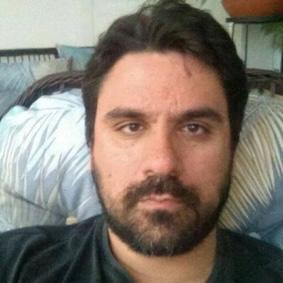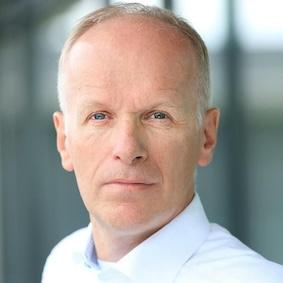An Interview with Leonardo Rossetti and Martin Schleicher, Co-Leads of the New Eclipse SDV Special Interest Group “Automotive Processes for Open Source Software”
The Eclipse Software Defined Vehicle (SDV) Working Group recently launched three Special Interest Groups (SIGs) focused on Rust, ThreadX, and Automotive Processes for Open Source Software (OSS). We sat down with the co-leads of the Automotive Processes SIG to discuss the group's main interests and objectives.
Please tell us how you first heard about and got involved in the Eclipse SDV Working Group.
Martin: Before the inauguration of the Eclipse SDV Working Group, Michael Plagge reached out to me and presented the concept. The idea of industry collaboration for the SDV based on open source was compelling and arrived at the right time. This is why Continental joined Eclipse SDV as a founding partner.
Leonardo: I was working in Red Hat’s upstream automotive initiative, the CentOS Automotive SIG, and it was a natural part of the job to start working with some upstream automotive OSS groups, such as Eclipse SDV.
"SDV is a fundamental transformation of the automotive industry and it can only be accomplished through collaboration."
What inspired you to take on the role of co-lead for this SIG, and what drives your passion in this field?
Martin: SDV is a fundamental transformation of the automotive industry and it can only be accomplished through collaboration. The Eclipse SDV Working Group is the ideal organisation to apply open source principles to automotive software. Open source has great potential in the automotive industry. However, we have to jointly address automotive-specific requirements, such as Functional Safety (FuSa), in an open source setup. Several discussions and questions within the industry motivated me to propose the creation of a SIG within the Eclipse SDV Working Group to address this specific issue.
Leonardo: I’ve been very interested in participating in open discussions about FuSa certifications within the OSS scope. However, there haven't been a lot of those since the automotive industry is generally not that familiar with OSS.
From your perspective, how does the SIG contribute to shaping the future of software-defined vehicles?
Leonardo: I think it plays, or at least should, a big role not only in the industry but in the general OSS ecosystem that SDV projects rely on. This is not “common knowledge” that is easily accessible or abstracted for several OSS projects, and that’s where I think the group can add value.
What innovations or emerging technologies are you most excited about that could impact the work of the SIG?
Martin: Tool-based automation for building, testing, and releasing software can shorten development time and speed up development cycles. Leveraging automation with open source principles might help us to not only achieve the requirements of FuSa, but also speed up software and system development. Docs-as-Code, where documentation is managed in the same way as source code, enables consistent system documentation with alignment between requirements, source code, and tests.
What are some of your objectives for this SIG?
Leonardo: One goal is to support and foster open discussions around OSS and FuSa certifications, while also developing educational materials, knowledge, and guidance for OSS projects around these certifications. Additionally, there is a focus on sharing knowledge about OSS with companies in the ecosystem that may be less familiar with it. Deeply engaging with internal FuSa/SDV Process working groups is another key objective, as well as sharing the safety aspects of the industry in a way that is friendly to the OSS ecosystem.
As a co-lead of the SIG, what are some of the challenges you face in driving collaboration and innovation within such a diverse group?
Martin: We have a truly diverse group with people bringing in different backgrounds and perspectives on open source and automotive specific quality requirements. This is a great starting point. The main challenge is balancing openness to discussion while ensuring the SIG produces actionable results.
"One goal is to support and foster open discussions around OSS and FuSa certifications."
What do you envision as the future of automotive software development, and how is the SIG preparing to meet those future demands?
Martin: As mentioned, I see benefits using tool-based automation (CI/CD/CT) in combination with Docs-as-Code to meet automotive process and quality requirements, and at the same time become more efficient in software development. The maturity badge concept of Eclipse SDV is a very good basis that we can leverage in the SIG.
What are the best ways for newcomers or interested parties to engage with the SIG and contribute to its work, Leonardo?
Leonardo: Joining our bi-weekly meetings is a good start. We also have a slack channel to ask questions and share content asynchronously. You do have to be an Eclipse SDV member to join those.
If your organisation would like to formally join the SIG, instructions are on the SDV website.

Leonardo Rossetti joined Red Hat in March 2016 in its Mobile platform as an engineer and has worked in several engineering projects since. He currently works with other upstream automotive communities and the CentOS Automotive SIG.

Martin Schleicher has more than 25 years of experience in the automotive software business. Martin is currently “Head of Software Strategy” at Continental, aligning the company’s activities related to the Software-Defined Vehicle. For more than 10 years, Martin has been actively contributing to industry consortia and initiatives such as SOAFEE, AUTOSAR, and Eclipse SDV as well as being involved in setting up the SDV Alliance. He is also active in EU SDV projects and VDA working groups.
Martin is regularly speaking at conferences and a member of program advisory boards, e.g. at the “ELIV”, “Automotive Computing Conference” and "Automotive Software Strategies".
Event tip: If you’re interested in Functional Safety for open source software, don’t miss Dana Vede’s talk at Open Community Experience.
